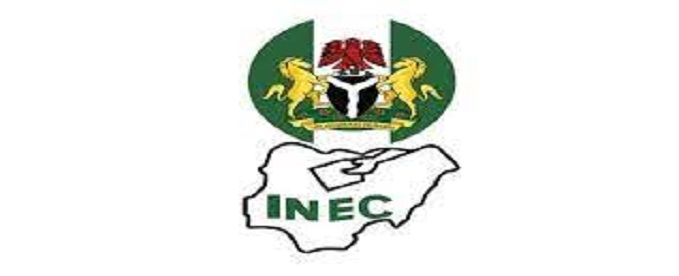E-Business
Gartner Quashes 5 Biggest Data Myths

With so much hype about big data, it’s hard for IT leaders to know how to exploit its potential, even as Gartner, Inc. dispels five myths to help IT leaders evolve their information infrastructure strategies.
“Big data offers big opportunities, but poses even bigger challenges. Its sheer volume doesn’t solve the problems inherent in all data,” said Alexander Linden, research director at Gartner. “IT leaders need to cut through the hype and confusion, and base their actions on known facts and business-driven outcomes.”
Myth No. 1: Everyone Is Ahead of Us in Adopting Big Data
Interest in big data technologies and services is at a record high, with 73 percent of the organizations Gartner surveyed in 2014 investing or planning to invest in them.
But most organizations are still in the very early stages of adoption — only 13 percent of those we surveyed had actually deployed these solutions.
The biggest challenges that organizations face are to determine how to obtain value from big data, and how to decide where to start.
Many organizations get stuck at the pilot stage because they don’t tie the technology to business processes or concrete use cases.
Myth No. 2: We Have So Much Data, We Don’t Need to Worry About Every Little Data Flaw
IT leaders believe that the huge volume of data that organizations now manage makes individual data quality flaws insignificant due to the “law of large numbers.”
Their view is that individual data quality flaws don’t influence the overall outcome when the data is analyzed because each flaw is only a tiny part of the mass of data in their organization.
“In reality, although each individual flaw has a much smaller impact on the whole dataset than it did when there was less data, there are more flaws than before because there is more data,” said Ted Friedman, vice president and distinguished analyst at Gartner. “Therefore, the overall impact of poor-quality data on the whole dataset remains the same. In addition, much of the data that organizations use in a big data context comes from outside, or is of unknown structure and origin. This means that the likelihood of data quality issues is even higher than before. So data quality is actually more important in the world of big data.”
Myth No. 3: Big Data Technology Will Eliminate the Need for Data Integration
The general view is that big data technology — specifically the potential to process information via a “schema on read” approach — will enable organizations to read the same sources using multiple data models. Many people believe this flexibility will enable end users to determine how to interpret any data asset on demand. It will also, they believe, provide data access tailored to individual users.
In reality, most information users rely significantly on “schema on write” scenarios in which data is described, content is prescribed, and there is agreement about the integrity of data and how it relates to the scenarios.
Myth No. 4: It’s Pointless Using a Data Warehouse for Advanced Analytics
Many information management (IM) leaders consider building a data warehouse to be a time-consuming and pointless exercise when advanced analytics use new types of data beyond the data warehouse.
The reality is that many advanced analytics projects use a data warehouse during the analysis.
In other cases, IM leaders must refine new data types that are part of big data to make them suitable for analysis.
They have to decide which data is relevant, how to aggregate it, and the level of data quality necessary — and this data refinement can happen in places other than the data warehouse.
Myth No. 5: Data Lakes Will Replace the Data Warehouse
Vendors market data lakes as enterprisewide data management platforms for analyzing disparate sources of data in their native formats.
In reality, it’s misleading for vendors to position data lakes as replacements for data warehouses or as critical elements of customers’ analytical infrastructure.
A data lake’s foundational technologies lack the maturity and breadth of the features found in established data warehouse technologies. “Data warehouses already have the capabilities to support a broad variety of users throughout an organization. IM leaders don’t have to wait for data lakes to catch up,” said Nick Heudecker, research director at Gartner.
E-Business
INEC Sets Up AI Division to Strengthen Electoral System

Independent National Electoral Commission (INEC) has announced the establishment of an Artificial Intelligence (AI) Division within its ICT Department.

This marks a significant stride toward enhancing electoral integrity, efficiency, and innovation in Nigeria’s democratic process.
This decision was reached at the Commission’s regular weekly meeting held in Abuja, following a series of consultations and engagements on the global and continental impact of AI on elections.
In a statement issued by Sam Olumekun, national commissioner and chairman of the Information and Voter Education Committee, INEC underscored that the growing relevance of AI in electoral matters necessitated a proactive institutional framework to manage both the risks and opportunities it presents.
“Our interactions with electoral bodies across Africa highlighted both the risks of AI—such as fake news and content manipulation—and the vast potential it holds for data-driven decision-making, risk mitigation, automated voter services, and geo-spatial intelligence for logistics,” Olumekun noted.
According to him, the newly created division will centralise the Commission’s AI efforts, ensuring a harmonized approach to deploying intelligent systems that enhance decision-making, improve voter engagement, and boost the credibility of the electoral process.
“The creation of this division puts the Commission at the forefront of institutionalizing AI capabilities in electoral management.
It is also part of our ongoing reforms in areas where administrative action is sufficient to drive change,” he said.
He added that the AI Division will help INEC better coordinate its existing technological investments while providing safeguards against the misuse of AI technologies.
“We are positioning ourselves to maximise the positive impact of AI while mitigating its negative implications. This step strengthens the credibility and transparency of elections in Nigeria,” Olumekun concluded.
The initiative, INEC emphasised, reflects its commitment to embracing innovation in safeguarding democracy and improving electoral services nationwide.
E-Business
CAC, NIBSS Unveil Platform for Data Access to Private Firms

Corporate Affairs Commission (CAC) in partnership with the Nigeria Inter-Bank Settlement System (NIBSS) has unveiled a new Application Programming Interface (API) integration system to allow private firms access company data from the Commission’s database.

Hussaini Ishaq Magaji (SAN), registrar general of CAC, who spoke in Abuja at the unveiling said the system would give selected private organizations access to CAC services through technology-based companies, called “super agents.”
“This is a practical step to show that the Commission is committed to meeting the expectations of our customers,” he said.
Magaji explained that the integration allows the agents to retrieve data from the CAC database for use in specific client requests, outside the standard services provided by the Commission.
“Before now, only a few government agencies had this integration, especially those involved in investigations, anti-money laundering, and terrorism financing. Now, private companies that meet the criteria can also access it,” he said.
He said the system complies with the Nigerian Data Protection Act 2023, and information such as residential addresses, phone numbers, and dates of birth may be restricted.
“This is a call to law firms and companies with the right technology. We’ve started with NIPS because of their credibility. Embassies and banks can now authenticate company records directly through them.”
“There are prescribed fees. We already collect them on our portal, and now customers can also pay through these agents,” he explained.
He named NIPS, MoneyPoint, and OPE as some of the companies involved.
“OPE and MoneyPoint handle only registrations. But NIPS has moved further into validation and verification,” he said.
Ngover Ihyembe-Nwankwo, executive director at NIBSS, who represented Premier Oiwoh, managing director, said the service allows secure and efficient data verification.
“This is the result of years of effort to connect our systems with CAC. It will help users verify data within the limits of data protection laws,” she said.
She said the move is a way to lower costs and promote interoperability across the financial sector.
E-Business
FG Launches Online Citizenship, Business Management Platform

Ministry of Interior has announced the launch of a new Online Citizenship and Business Management Platform in line with the Renewed Hope Agenda of President Bola Tinubu.

A statement signed by Dr Magdalene Ajani, permanent secretary, Ministry of Interior’s said the initiative forms a key part of its ongoing reforms aimed at promoting transparency, enhancing operational efficiency, and significantly improving service delivery to the public.
The new digital platform is designed to streamline the application and processing of citizenship and business-related services, ensuring faster turnaround times and improved user experience.
The platform allows users to apply for and manage business permits, ensuring that both local and foreign businesses operate legally in Nigeria.
It includes an Expatriate Quota System to manage work permits for foreign employees, helping companies hire skilled workers while complying with Nigeria’s immigration laws.
The Citizenship Administration and Management System provides a streamlined online process for applying, tracking, and managing Nigerian citizenship applications and related services.
Members of the public, corporate entities, and other stakeholders are expected to access the platform through the ministry’s website: https://interior.gov.ng , Direct Portal Access: https://candb.interior.gov.ng , or contact candb-support@interior.gov.ng for support and inquiries.
“The Ministry of Interior remains committed to establishing a more efficient, transparent, and secure framework for citizenship administration, while continuously enhancing service delivery through digital transformation,” the statement read in part.

 Telecom2 days ago
Telecom2 days agoTelcos Warn of Nationwide Telecom Blackout over Diesel Shortage

 E-Financial2 days ago
E-Financial2 days agoCBN, SEC Fine Access Holdings N1.21Bn for Infractions

 Telecom2 days ago
Telecom2 days agoNigerians Spend N5.3 Trillion on Telecom Services

 News2 days ago
News2 days agoKaspersky Uncovers Dero Crypto Miner Spreading via Exposed Container Environments

 E-Financial2 days ago
E-Financial2 days agoFirst Asset Management Launches N100 Billion Infrastructure Fund to Provide Sustainable Capital for Infrastructural Development Across Sectors

 Telecom2 days ago
Telecom2 days ago13 New Things Google Launched at I/O 2025

 Broadcasting2 days ago
Broadcasting2 days agoCanal+ Buyout Of South Africa’s MultiChoice one Step Closer

 General News2 days ago
General News2 days agoIFC, Standard Chartered Expand Lending in Local Currencies




























